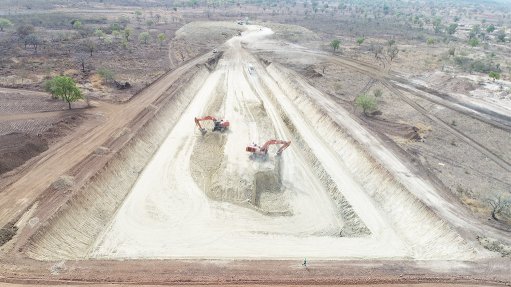
BREAKING GROUND Construction at the Bagassi South Expansion is under way and first ore production is expected in the fourth quarter of 2018
Canadian gold miner Roxgold has started construction at the Bagassi South gold project in south-western Burkina Faso, with development progressing according to plan.
The environmental and social permitting, as well as the compensation activities of the project have been completed.
Ground was broken at the site in February and clearing, fencing, construction building and the boxcut construction for the second underground mine has started. There are also personnel and equipment on site to start the development of the ramp in the third quarter of 2018.
“Bagassi South is Roxgold’s first growth project, using synergies with the existing Yaramoko 55 Zone personnel and equipment,” explains Roxgold investor relations and corporate communications manager Kelley Stamm.
The first ore production is expected in the fourth quarter. The processing plant expansion is expected to start in the second quarter, while the Bagassi South mine development is expected to begin in the third quarter.
Preproduction costs are estimated at $29.6-million and will be funded through internal cash flow. The mine has a production life of 4.2 years, including three years at nominal rate of 350 t/d ore extraction and 48 000 oz/y.
Bagassi South’s mine production plan includes proven and probable reserves of 450 000 t grading 11.54 g/t gold.
“We look forward to delivering first ore from the project in the fourth quarter,” Roxgold president and CEO John Dorward notes.
Roxgold has meanwhile elevated production metrics across several fronts at its Yaramoko gold mine, in Burkina Faso.
“We continue to see consistent operating performance from Yaramoko. This year has started off ahead of our expectations and we remain confident that we will have another strong year ahead,” Dorward points out.
Since October 2017, the daily production at the 55 Zone has averaged 1 124 t/d. This is nearly 50% above the nameplate capacity of 750 t/d.
This increase is attributed to an increase in stope production tonnes rather than development tonnes, with tonnes from stoping increasing 55% in October and 80% in January. Consequently, the run-of-mine stocks reached about 40 000 t at 14.9 g/t gold at the end of January. This significantly de-risks the operations for 2018, according to the miner.
Processing throughput rates increased in the fourth quarter of 2017 until the end of January. On average, 23 700 t were milled in the last quarter of 2017, while January reached a record of 24 363 t milled, at an average rate of about 785 t/d. Gold recoveries remain at an average of 98.8% to date since commissioning.